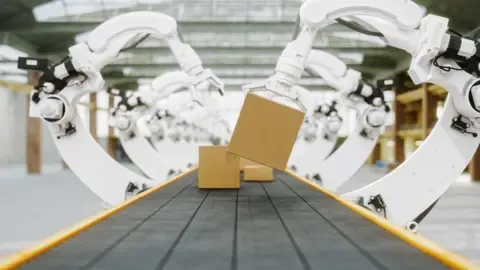The recent tragic accident at a vegetable sorting facility in South Korea’s South Gyeongsang province, where a 40-year-old employee was crushed to death by a robot that mistook him for a box, has brought to the forefront the importance of prioritizing worker safety in the era of industrial automation. The incident has raised serious concerns about the safety of humans working alongside robots, particularly in industries where automation is becoming increasingly prevalent. The rapid proliferation of robots in manufacturing, logistics, and healthcare industries has led to questions about worker safety and the need for proper training and maintenance.
The robot in question was designed to lift boxes of vegetables and place them on a pallet, but its sensors malfunctioned, leading to the fatal mistake. This raises serious concerns about the design and operation of industrial robots and the need for more research into the safe interaction between humans and robots. The incident is not an isolated case, as a similar accident occurred earlier this year at an automobile parts factory, where a man in his 50s suffered serious injuries after becoming trapped by a robot.
As industrial automation continues to revolutionize the way we work, it is crucial that industry leaders and policymakers prioritize worker safety. The incident has sparked concerns about the need for more research into the safe interaction between humans and robots. Tech giant Amazon has recently commissioned the Massachusetts Institute of Technology to conduct research on how workers can interact with robots safely and efficiently. This is a critical area of study, as the increasing use of robots in various industries holds the potential to revolutionize the way we work, but it also raises concerns about the safety and well-being of human workers.

Tragic Robot Accident in South Korea Highlights Urgent Need for Enhanced Worker Safety in Industrial Automation
In the aftermath of the accident, an official from the Dongseong Export Agricultural Complex, which owns the plant, has called for a “precise and safe” system to be put in place to prevent such tragedies from occurring. Experts and industry insiders echo this demand, emphasizing the need for robust safety protocols and regular maintenance to ensure the safe operation of industrial robots. The South Korean incident serves as a stark reminder of the importance of prioritizing worker safety and the need for responsible deployment of robots in various industries.
It is imperative that industry leaders and policymakers take concrete steps to address this critical issue, including implementing robust safety protocols, regular maintenance, and conducting research into the safe interaction between humans and robots. By doing so, we can ensure that the benefits of industrial automation are achieved while prioritizing the safety and well-being of human workers. The incident has highlighted the need for more research into the safe interaction between humans and robots, as well as the importance of prioritizing worker safety in the era of industrial automation.









































